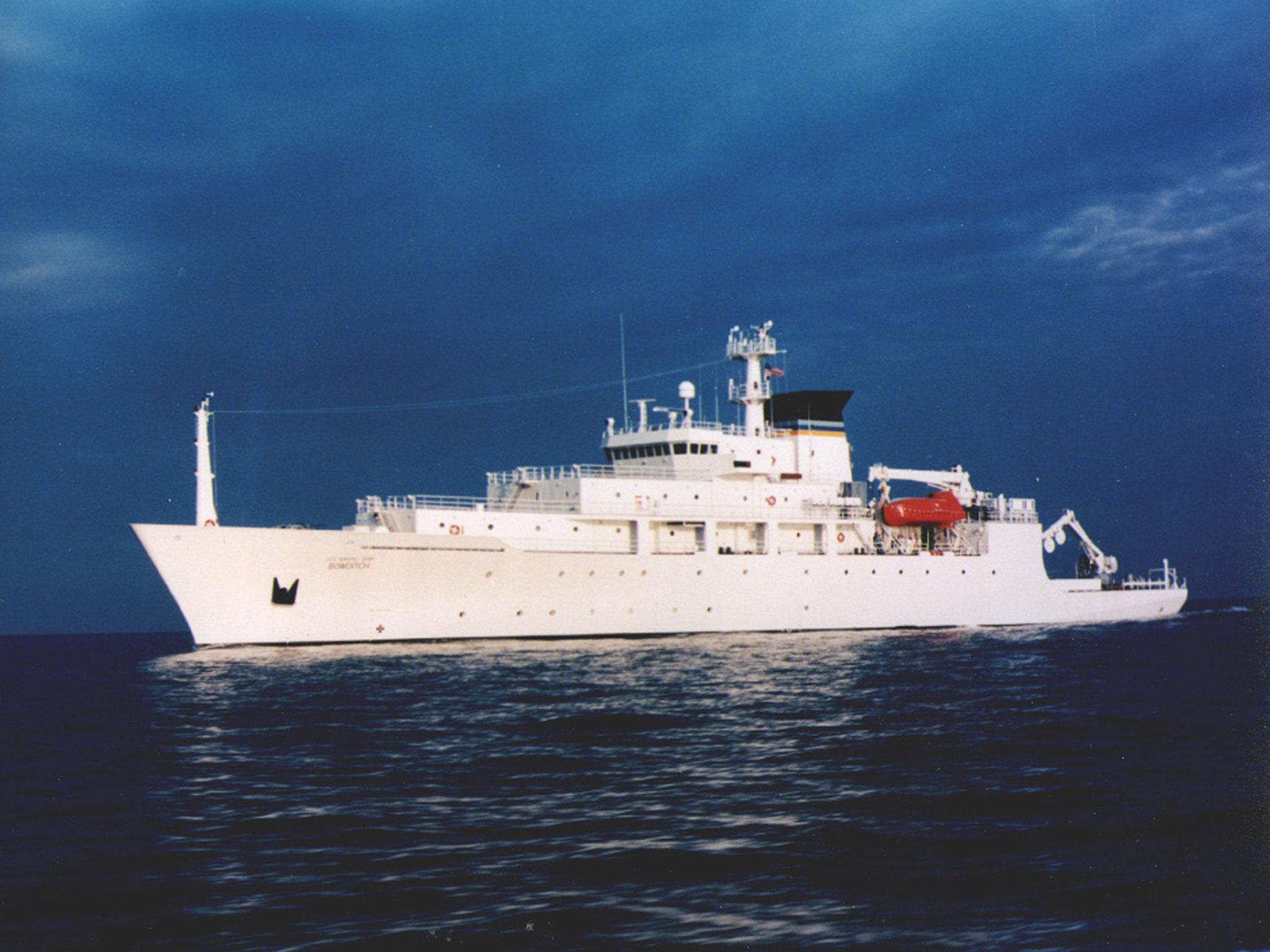China hits back over seized US Navy drone after Donald Trump tweet
Beijing accuses the US of 'hyping up' the issue

Beijing hit back in the diplomatic spat over its seizure of a US Navy drone in the South China Sea after Donald Trump claimed in a message on Twitter that China has stolen the device.
Chinese officials had earlier indicated there would be a “smooth” resolution of the diplomatic incident, but after the President-elect’s tweet, they accused Washington of “hyping up” the issue.
The drone's seizure, which followed Mr Trump's call with the president of Taiwan, was described as one of the most serious diplomatic incidents between the two nations in recent memory.
In the comment, Mr Trump wrote: "China steals United States Navy research drone in international waters – rips it out of water and takes it to China in unpresidented [sic] act."
A short time later, China's Defence Ministry said that it had been in touch with the Washington about the drone, but the US's "hyping up" of the issue was not conducive to resolving the issue.
It was not clear who they thought was responsible for the "hype", but Mr Trump's tweet appeared to be the only possible source.
Some interpreted China's decision to take the drone as a warning signal to Mr Trump because of his warmth towards Taiwan.
In taking a congratulatory call from Taiwanese President Tsai Ing-wen, Mr Trump broke with US diplomatic practice dating back to the 1970s.
As part of its foundational 'One China' policy, Beijing regards the island as part of its sovereign territory.
Only on Friday, Barack Obama had attempted to calm the tensions with China.
“If you are going to up-end this understanding, you have to have thought through what are the consequences," he said of the US stance on Taiwan.
The President warned Mr Trump against slipping into "full conflict mode" with Beijing.
“Because the Chinese will not treat that [Taiwan] the way they will treat some other issues. They won’t even treat it the way they treat issues around the South China Sea, where we have had a lot of tensions. This goes to the core of how they see themselves and their reaction on this issue could end up being very significant," Mr Obama added.
Some observers on social media also mocked the President-elect's misspelling of 'unprecedented'.
The tweet was later resent, apparently by Mr Trump's staff, with the correct spelling.
In a statement issued before Mr Trump's tweet, China's foreign ministry had said: "According to [our] understanding, the US and Chinese sides are working on appropriately handling this matter through channels between the two militaries."
And a newspaper published by China's ruling Communist Party also cited a military officer as saying that a "smooth resolution" of the matter was expected.
According to the US, the drone was carrying out scientific research underwater and was controlled by civilian contractors.
US officials had issued a formal diplomatic complaint to China demanding the drone's return.
"It is ours. It's clearly marked as ours. We would like it back, and we would like this not to happen again," Pentagon spokesman Captain Jeff Davis told reporters.
The drone costs about $150,000 (£120,000) and is largely commercial, off-the-shelf technology, Capt Davis added.
The USNS Bowditch, which is not a combat ship, was stopped in international waters on Thursday afternoon while attempting to recover two of its gliders when the Chinese ship approached, Capt Davis said. The Chinese ship then took one drone away.
According to the Pentagon, as the Chinese ship left with the drone, which is about three meters long, its only radio response to the US vessel was, "we are returning to normal operations".
Bonnie Glaser, senior adviser for Asia at the Center for Strategic and International Studies, said the seizure of the glider occurred inside the exclusive economic zone of the Philippines, not China, and appeared to be a violation of international law.
China delineates its South China Sea territorial claims with a roughly drawn sea border known as the "nine-dash line" that runs along the west coast of the Philippines.
However, it hasn't explicitly said whether it considers those waters as sovereign territory, and says it doesn't disrupt the passage of other nations' shipping through the area.
The US doesn't take a position on sovereignty claims, but insists on freedom of navigation, including the right of its naval vessels to conduct training and other operations in the sea.
Additional reporting by AP and Reuters
Join our commenting forum
Join thought-provoking conversations, follow other Independent readers and see their replies
Comments